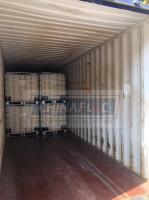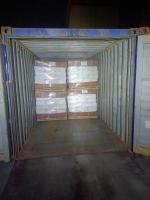Our Products
Product Center / polydadmac(c-587)used for mineral processing can be replaced by Chinafloc

PolyDADMAC, or poly(diallyldimethylammonium chloride), is a high-performance cationic polymer widely used in water treatment and industrial processes for its strong charge density and effectiveness in coagulation and flocculation. As a water-soluble polymer with quaternary ammonium groups, PolyDADMAC is primarily utilized as a coagulant in water and wastewater treatment. However, it also serves crucial roles in papermaking, cosmetics, oil recovery, textiles, and mining. Its high molecular weight, strong cationic charge, and stability across a wide pH range make it especially useful in separating suspended solids from water.
This article will explore in detail the main application of PolyDADMAC, which is water and wastewater treatment, and outline how this function translates across a variety of industries.
1. Primary Application: Water and Wastewater Treatment
1.1 Role as a Primary Coagulant
In water treatment, PolyDADMAC is most commonly used as a primary coagulant. It functions by neutralizing the negatively charged colloidal particles in water—such as clays, silt, bacteria, viruses, and natural organic matter (NOM). Once charge neutralization is achieved, these colloids destabilize and begin to agglomerate, forming larger and more easily removable flocs.
Compared to traditional inorganic coagulants such as alum (aluminum sulfate) or ferric chloride, PolyDADMAC offers numerous advantages:
-
Lower sludge production
-
Reduced corrosion to system infrastructure
-
Faster floc formation and sedimentation
-
No need for pH adjustment in most cases
-
Reduced metal ion residuals in treated water
These features make PolyDADMAC ideal for replacing or supplementing inorganic coagulants in municipal water treatment plants, particularly in facilities handling variable turbidity and organic load.
1.2 Municipal Drinking Water Treatment
PolyDADMAC is used extensively in the clarification stage of drinking water production. Raw surface waters, such as river or reservoir sources, typically contain suspended solids, silt, and organic compounds that affect taste, odor, and safety. Dosing PolyDADMAC promotes the rapid coagulation and settling of these impurities, ensuring clear and clean water for further filtration and disinfection.
It is particularly effective for:
-
Removal of turbidity
-
Color removal
-
Reducing total organic carbon (TOC)
-
Pre-treatment prior to membrane filtration
The polymer’s compatibility with conventional or membrane-based filtration systems makes it ideal for both traditional water plants and modern membrane filtration facilities.
1.3 Industrial Wastewater Treatment
PolyDADMAC also finds critical use in industrial wastewater treatment for a wide range of industries, including:
-
Petrochemical and oil refineries
-
Chemical manufacturing
-
Food and beverage processing
-
Textiles and dyeing units
-
Metal plating and electroplating
In these applications, PolyDADMAC is used to:
-
Remove emulsified oils and greases
-
Coagulate fine solids and colloidal particles
-
Eliminate suspended dyes and pigments
-
Assist in dewatering of biological and chemical sludge
-
Reduce biochemical oxygen demand (BOD) and chemical oxygen demand (COD)
It is often dosed in conjunction with flocculants such as anionic polyacrylamides, forming a synergistic coagulant–flocculant system that improves solid-liquid separation and effluent clarity.
1.4 Sludge Dewatering
Another key use in wastewater systems is in sludge dewatering. PolyDADMAC conditions the sludge by breaking down the colloidal stability and enabling more efficient dewatering through mechanical means such as:
-
Centrifuges
-
Belt filter presses
-
Screw presses
It helps reduce the moisture content of the sludge cake, which in turn reduces disposal costs and improves overall plant efficiency.
2. Papermaking Industry
PolyDADMAC is widely applied in the pulp and paper industry as a:
-
Fixing agent: Helps in fixing pitch, stickies, and anionic trash
-
Retention and drainage aid: Enhances fiber and filler retention on the paper machine wire
-
Charge neutralization agent: Balances the anionic charges from pulp and additives
It improves the quality of the paper by reducing the contamination of the white water system, optimizing drainage, and preventing deposit formation. The result is increased machine speed, better paper quality, and reduced chemical usage.
3. Mining and Mineral Processing
In the mining sector, PolyDADMAC is employed to improve water clarification and solid-liquid separation in the treatment of mine wastewater and tailings. It works effectively in:
-
Clarification of return process water
-
Thickening of tailings
-
Flotation circuit clarification
-
Removal of fine solids and colloidal silica
Especially in gold, copper, coal, and phosphate mining, PolyDADMAC serves as a pre-coagulant before flocculants are added, significantly improving settling rates and water recovery.
4. Oil and Gas Industry
In oilfields and refineries, PolyDADMAC is used in the treatment of produced water, which contains:
-
Oil emulsions
-
Fine solids
-
Suspended organics
Its strong cationic nature allows it to efficiently:
-
Break emulsions
-
Coagulate dispersed oil droplets
-
Improve the performance of dissolved air flotation (DAF) systems
It is especially suitable for offshore platforms and enhanced oil recovery (EOR) operations where fast separation and compact treatment systems are required.
5. Cosmetics and Personal Care Products
In the cosmetics industry, PolyDADMAC is used in hair conditioners, shampoos, and skin care products due to its excellent film-forming, antistatic, and moisturizing properties. It conditions hair, improves combability, and adds smoothness without greasiness. It is also compatible with anionic surfactants and maintains efficacy across a broad pH range.
6. Textile Industry
PolyDADMAC is employed in textile effluent treatment for:
-
Dye fixation
-
Color removal
-
COD/BOD reduction
Its ability to bond with anionic dyes and organic matter allows for efficient treatment of wastewater from dyeing, printing, and finishing operations.
7. Advantages of PolyDADMAC
-
High cationic charge density for effective coagulation
-
Fast floc formation and sedimentation
-
Effective over a wide pH range (4–10)
-
Reduces sludge volume compared to inorganic coagulants
-
Compatible with other treatment chemicals
-
Stable in storage and use
Conclusion
The main application of PolyDADMAC is in water and wastewater treatment, where it functions as a high-performance cationic coagulant for the removal of suspended solids, turbidity, color, and organic contaminants. Its effectiveness in charge neutralization, sludge conditioning, and compatibility with other coagulants makes it a staple in municipal and industrial effluent treatment systems. In addition to its central role in water treatment, PolyDADMAC supports a wide range of industries including papermaking, mining, oil and gas, cosmetics, and textiles. With its high efficiency, low sludge generation, and broad applicability, PolyDADMAC continues to be a critical component in modern separation and purification processes.



817_small.jpg)

